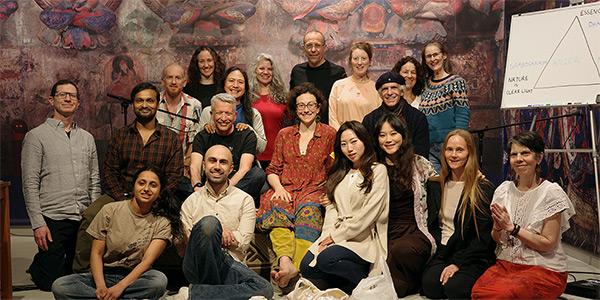by Mallika Iyer
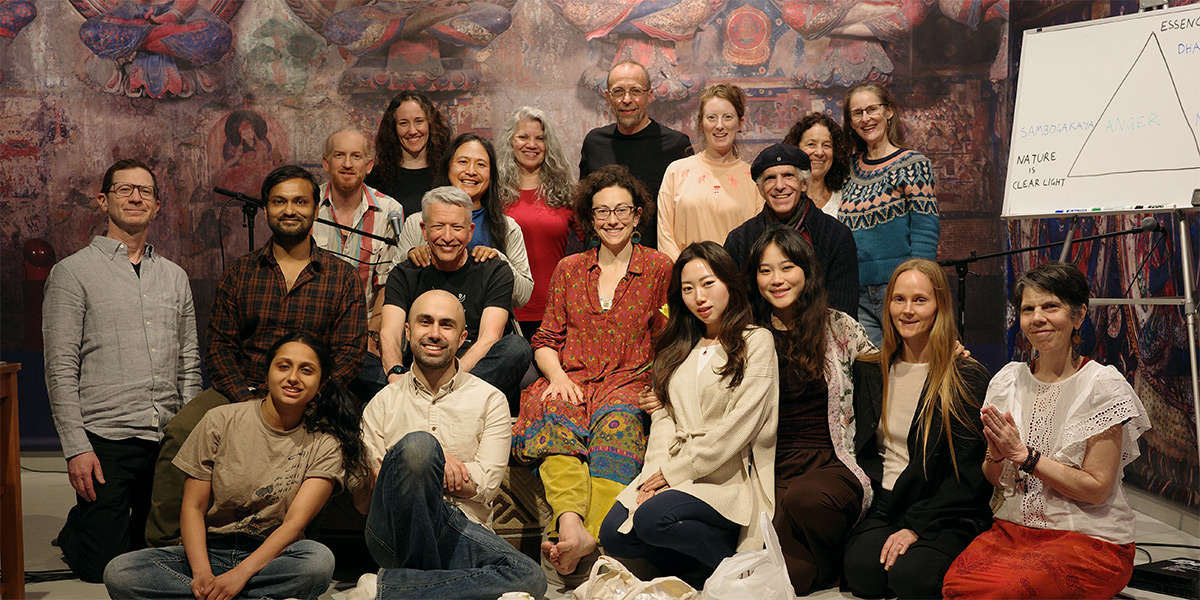
In April, I attended the Nalanda Institute retreat, From Fire to Light: Completion Stage Yogas for Transforming Trauma, at Tibet House featuring Dr. Nida Chenagstang, a Tibetan healer and teacher of Buddhist Tantric practice. Dr. Nida is a world-renowned teacher who at this event, was addressing a hall full of people. Yet by some power, I felt he was speaking to me personally, like he was an old and treasured friend. He has the ability to connect and to care on that deep of a level. His conversation with Dr. Joe Loizzo and with us was overflowing with wisdom that I hurriedly tried to capture in my notebook, but one particular sentence struck so acutely that I couldn’t even write: “I know I’m Buddha and the rest falls into place.”
This one sentence aligned with a quote from my childhood hero, comedienne Lucille Ball (but more on that later) and it made me reframe my past, present and future. My entire life, I have always been consumed by the question, “What do I have to do next?” What do I have to do next in order to be approved, successful, impressive, confident and happy? I think part of this unrelenting climb towards a mythical Shangri-La of permanent contentedness was rooted in my growing up in competitive academic and social environments where it felt like everybody was trying to outdo one another – whether to get into college or attract somebody desirable. As a result, I lived in a perpetual state of never having arrived. I was so enmeshed in that mindframe, that regardless of what milestone I achieved, I never allowed myself peace from the question, “What do I have to do next?” And I never detached from the superficial outcomes associated with this question, instead, somewhat paradoxically, clinging to the person, opportunity, or prize more and more obsessively if it became farther out of reach.
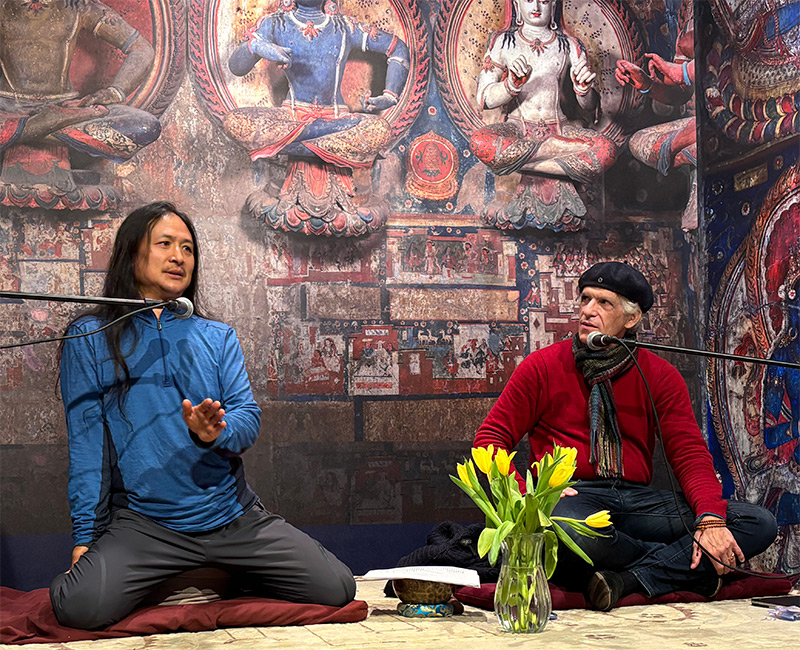
Dr. Nida didn’t flip my ingrained question by saying not to do anything; of course, we must persist through the personal ups and downs, and global ups and downs, that life and the universe present. We must take action to advance. But he introduced the possibility that we don’t have to act from a position of inadequacy or competition. Rather, we can believe in our inherent greatness – our inherent Buddha – and make that the means rather than the end. What if I ceased my desperate pursuit of feeling worthy and simply knew that I am? My life would feel less like a never-ending battle or narcissistic competition and more like a naturally unfolding path that is exciting, caring, and giving – towards myself and towards others. How easier and clearer everything would become if I decided, “I have arrived! I am awesome! What do I want to do now?” Bestowing myself with care, wisdom and peace from the get-go allows my actions to be meaningful and positive, and this is a much friendlier journey than the impossible climb of my past. If I decide to see things like Buddha, I will see how things work out; how things work with me and not against me.
Now for Lucille Ball – whose comedy is still funny no matter how many times I watch the show. She said “Love yourself and everything else will fall into place. You really have to love yourself to get anything done in this world.” I wouldn’t have expected to learn the same lesson from the queen of comedy serving up side-splitting slapstick scenes as I did from a collected, learned and revered Buddhist teacher, but retrospectively, of course I did – the Buddha takes innumerable forms. The Buddha is waiting in everybody. Anybody in any field from any culture and walk of life has the power to act on wisdom and compassion and illuminate the path for others – Dr. Nida, Lucille Ball and me! When I finally decide I am Buddha and the enviable peace of the Buddha is not dependent on the next thing, the next thing, and the thing after that, the inevitable “downs” of the ups and downs do not derail me because I already know who I am and what I can do. And I can do it even better! This is the healing that has been shared with me, that I am inspired to share with others still waiting and climbing.
Editor’s Note:
Mallika Iyer is a special educator, writer and recovery advocate in Boston. She is passionate about making learning and healing accessible for youth of all abilities and is currently a Contemplative Psychotherapy Program student.
Nalanda Institute’s Contemplative Psychotherapy Program is a three-year journey through the transformative arts of Mindfulness, Insight, and Care; Wise Compassion; and Embodied Wisdom. People enter the journey at any one of the years of study. A certificate is offered upon completion of each year of study.
Across 2025–2026 we will offer the Mindfulness, Insight, and Care year of study in English and Spanish/Portuguese, and the Embodied Wisdom year of study in English. Stay tuned for more information in our upcoming newsletters, or apply now with the below links:
Certificate Program in Embodied Wisdom
Certificate Program in Mindfulness, Insight and Care
Programa de Psicoterapia Contemplativa en español y portugués / Programa de Psicoterapia Contemplativa em português e espanhol
by Nalanda Institute
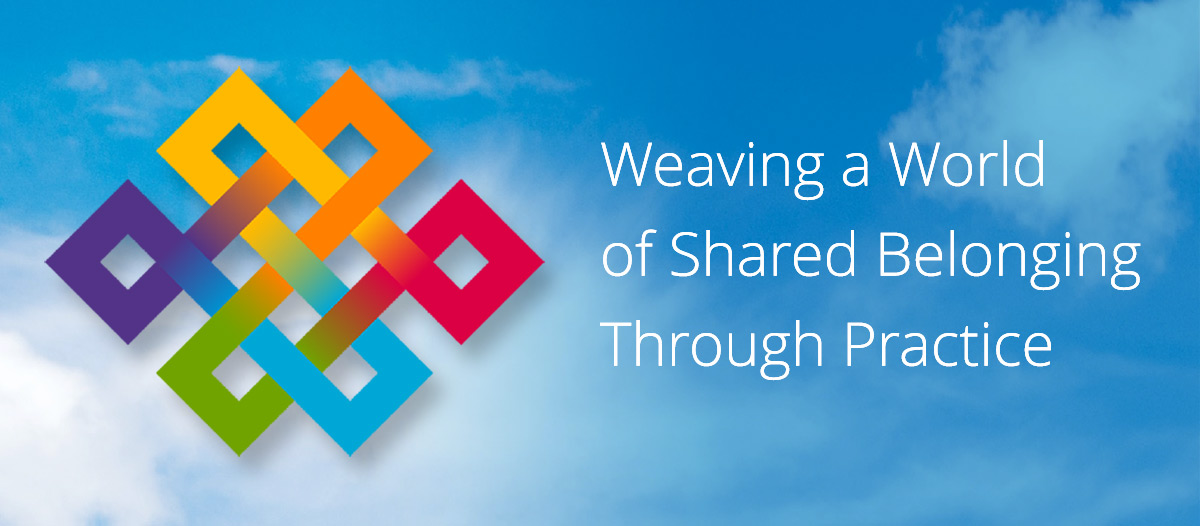
As we move through our Year-End Drive, we will release four practices that support us in collaboratively Weaving a World of Shared Belonging. Drawn from the transformative wisdom and arts of the Nalanda tradition and aimed at realizing the vision of the Clockwork Tantra (Kalachakra), these practices guide us through four key steps to Weaving a World of Shared Belonging:
- Loving all beings equally as oneself
- Disidentifying with our traumatic sense of being a separate self
- Developing and extending unconditional love to all beings
- Identifying with our altruistic spirit to help awaken all beings
We hope you’ll join us in these practices as we collectively work towards dismantling suffering and reknitting together a fabric of connection across this world!
Practice 1: Equal Empathy
Practice unlearning implicit bias to expose and break through othering biases embedded in your personal and collective unconscious so you can see and love all living beings, close, neutral, and far, as equally dear as your loved ones and yourself. Nalanda Institute founder Joe Loizzo guides us through this meditation.
Practice 2: Four Keys Self-Analysis
Try this practice of self-analysis with Joe Loizzo through the four keys to release the traumatic identity habits that anchor our false sense of separateness and to reclaim our true self of radical openness that
connects us to the real world of our shared belonging.
Practice 3: Compassion Chain Reaction
Try this brief practice of wise give-and-take that slowly grows your capacity to extend threads of loving-caring awareness openly in a compassion chain reaction that gradually reaches out to embrace all beings everywhere.
Practice 4: Becoming the Clockwork
Try this brief practice of role-modeling imagery, imagining the fabric of your mind-body process as a loom on which to weave the Clockwork vision of Mother Space and Father Time which guides us all towards the Kalachakra apocalypse of global shared belonging and restoring our earth as a medicine planet.
Our Year-End Fundraising Drive supports our healing work Weaving a World of Shared Belonging. We come together through our core programs, retreats, short courses, free affinity groups, and donation-based lunchtime meditations to restore and deepen connection to ourselves, each other, our whole human community, and to our living planet. If you believe in the transformative work at Nalanda Institute, we invite you to donate today.
by Joe Loizzo

Dear Friends,
As we brace to hear the results of a hotly contested, deeply consequential election, we have an opportunity to strengthen one of the most protective and beneficial muscles in our embodied minds: equanimity.
While the survival drive that anchors our traumatic way of being is rooted in our instincts for self-
enclosure, separation, and duality—self or other, life or death, good or bad—the thriving mode that frees us to open our hearts and minds and to engage the full complexity of our lives and world, is rooted in the soil of our connective social capacities for love, compassion, gratitude, and equanimity.
Equanimity holds the wisdom of connection—the wisdom that helps expose and release the deathgrip of self-protective instincts, self-enclosing identities, and rigid worldviews by keeping us open to others and their unique needs, lived identities, and distinctive worldviews. It reminds us that holding any fixed, binary position fuels opposition, that fixated attachment to any binary outcome locks us into a rigid mindset and way of being prey to what are called the Eight Worldly Winds: clinging to comfort and fighting discomfort; attachment to winning and aversion to losing; seeking praise and rejecting criticism; clinging to celebrity and avoiding censure. In the Mahayana tradition, the social scope of the worldly winds is emphasized: clinging to good things for our loved ones and in-group while wishing the opposite for our challengers or out-group. Equanimity is the medicine that allows us to move through these winds without being thrown off center and off balance—to be open, resilient, flexible, and responsive enough to stay connected to all beings and to the infinite complexity of things in a continuous, unwavering way.
Editor’s note:
May this meditation support all beings everywhere in the pursuit of their ongoing practice of equanimity while being fully present to the complexity within ourselves, within those around us, and the world we collectively share.
by Ayesha Basi

Last week, I participated in my first silent retreat led by the wonderful Kate Johnson. Not only was it my first retreat, but it was my first time spending five days in meditation focused solely on metta, the practice of lovingkindness. Metta is a practice of cultivating unconditional love, kindness, and positive energy towards oneself, others, and the world at large.
(more…)by Richard Williams
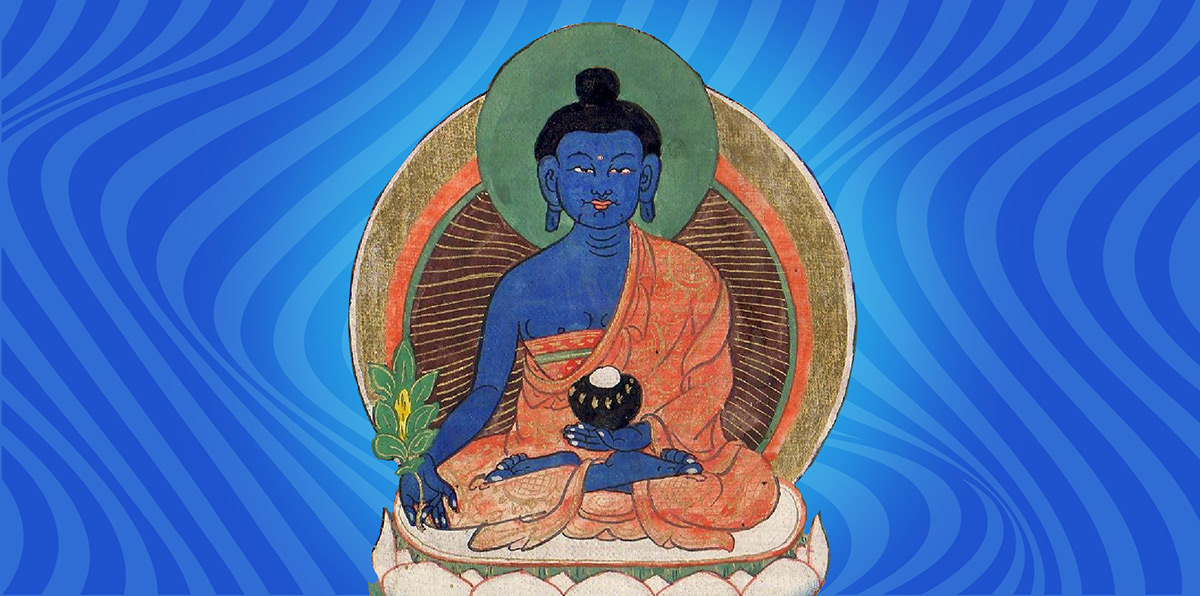
As a person living with a diagnosis of severe mental illness, in a Black body, and with a queer heart, the lack of belonging, community, and connection has been normalized. Early in life and in a child’s mind, a survival decision had to be made, to search for belonging or function. I chose to function, however empty that functioning was. I suspect this is a shared experience in a society that determines humanity and value based on our contributions.
by Victoria Fontana
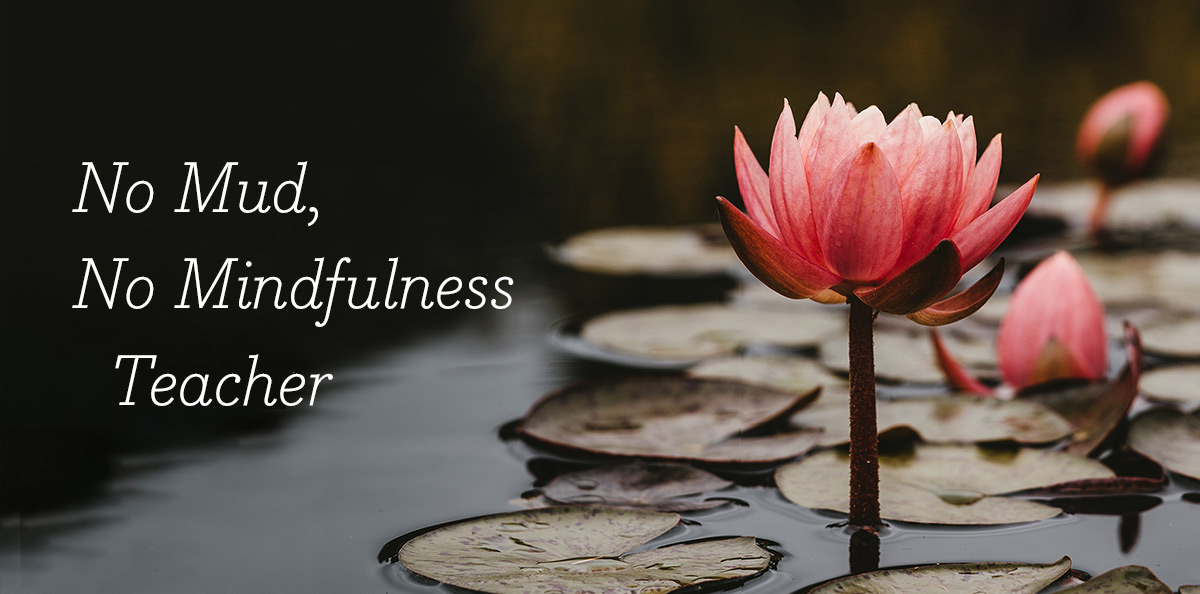
When I think about my path to becoming a Mindfulness and Compassion teacher, I am reminded of the many paths that converged from diverse points into the moment I realized that this was my calling. Life experiences, mentors, friends and contemplative teachings make up the landscape of my path. Here I share this journey with you.
I was a peacemaker by nature, with a keen desire to alleviate others’ suffering. Part of this was nature, and part was “nurture.” Unfortunately fortunate was the child who grew up in divorce and was desperate to keep those she loved at ease, keep the peace. I developed a massive radar for others’ dis-ease. This very trauma of a three-year relationship with daily dismay became bootcamp training for my often-criticized sensitivity to others’ emotions and well-being. My energies were misguided, and I was unaware that these efforts were my desperate attempt to survive and hold on to love.
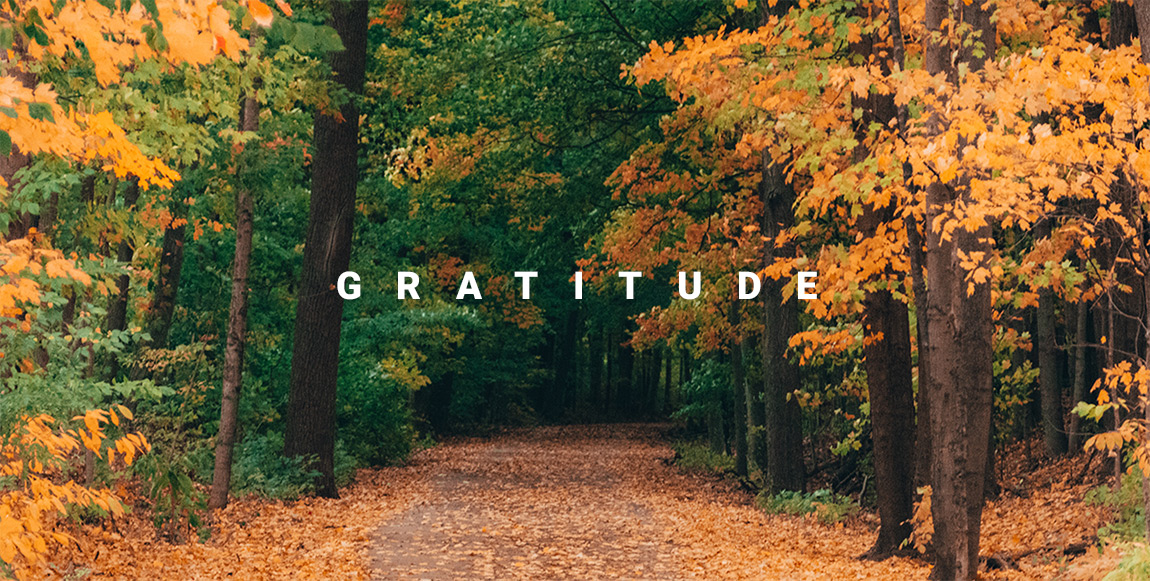
In his Stages of the Altruist’s Path, the 5th century Nalanda master, Asanga, taught that gratitude emerges from acknowledging the kindness and the care we’ve been shown by all of life—the kindness of our parents in giving us life, of our human ancestors in tending and caring for the earth and creating our culture and way of life; and the kindness of nature that’s generative and sustains life. This practice requires accepting all of the difficulties and the harm we see and have experienced in a knowing but not passive way; yet sincerely remembering and connecting with all of the good. This is especially relevant as some prepare to celebrate Thanksgiving in the United States. Although it’s a holiday many recognize as an opportunity to express gratitude, it is also a national day of mourning for Native Americans. We must name and honor the entirety of this history. It is what’s necessary for gratitude to emerge.
by Joe Loizzo
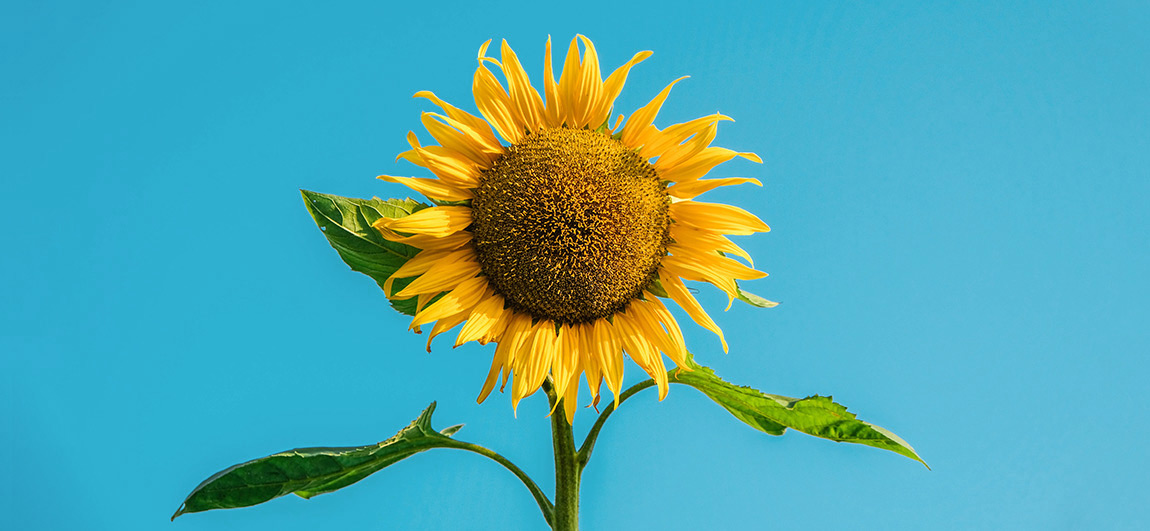
With summer here, we invite you to make more space and time to practice unwinding, whether in your favorite natural refuge—seaside or mountainside, lake or forest—on the cushion in your meditation space or in your choice reading chair or coffee nook in whatever spare minutes or hours you can clear in your day. Turn off your devices, wishing all life well, and reconnect with your own body and mind.
As you reconnect with yourself, tuning in to the natural rhythms of your body and mind, feel how precious such reflective moments are in your life. Especially invite and savor any memories that evoke a felt sense of being fully whole and alive—in harmony with yourself, nature, and the extended family of all life.
By Scott Tusa

Editor’s Note: In this post, Nalanda Institute faculty Scott Tusa describes meditation as a practice of accessing our Buddha-nature, the open-hearted warmth and clarity the Buddha taught is our true essence. In a forthcoming Sustainable Happiness course which begins February 24th, Scott will be teaching what Tibetans consider the most direct path of meditation to quickly access that nature within us—the art of the Great Seal or ‘Mahamudra.’
The essence of the Buddhist path is the teachings on Buddha-nature (awakened-nature). As a foundational principle, I have found these teachings indispensable for my meditation practice.
What is Buddha Nature?
Buddha-nature represents the extremely positive news that our essence, no matter how many mistakes we make, is not fundamentally flawed. It is the opposite of original sin and affords us the potential for true freedom.
By Nalanda Institute Editors
[metaslider id=”5327″]
As the year comes to a close, we’d like to take the time to share with you some highlights of all we’ve accomplished together throughout the year!
Late Winter. We brought in 2019 with a trifecta of inspiring courses and trainings: Yoga, Mind & Spirit Training, Sustainable Happiness Course in Compassion, and Meditation Teacher Training in Compassion.
Spring. In the spring, alongside our Toronto partner X-Hale, we successfully launched our new online Compassion-Based Resilience Training (CBRT) Teacher’s Program, with outreach worldwide; and graduated the NYC and San Francisco cohorts of our Contemplative Psychotherapy Program.
by Nalanda Institute Editors
[metaslider id=”4579″]
As this year of the Earth Dog comes to an end and we usher in the new year of the Earth Mother Pig, we are happy to look back at just a few of the amazing accomplishments of our community. 2018 has been a pivotal year in which we’ve evolved our teaching methods, deepened our community, and made our programs more widely available.
Extended captions and an elaboration of some of our programs and events in 2018:
by Fiona Brandon
During our recent Mindfulness Year fall retreat, Joe Loizzo emphasized to the cohort that the development of the self is “a creative project,” but one that is not always in our favor. “There is a tendency once we make an interpretation [about ourselves or an experience]…to forget it was an interpretation. [We] just stamp it with the seal of reality because for one moment [the interpretation] was serviceable.” It can be shocking to look under the hood of this habitual pattern and see that we create lifelong fundamental beliefs about ourselves, and the world around us, based on interpretations that may have been true in one moment, but are inaccurate for subsequent moments in our lives!
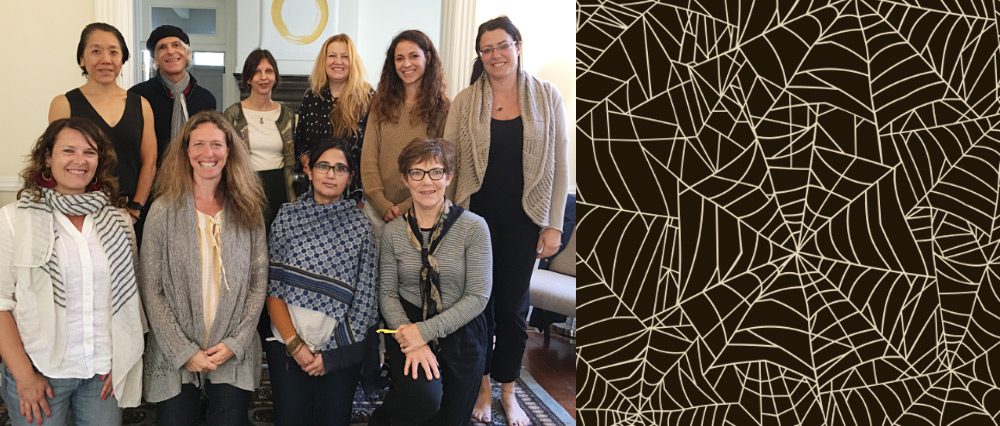
The year begins with an understanding of the webs we weave. Pictured on retreat are San Francisco students with Dr. Joe Loizzo (second in top row) and Fiona Brandon (second in bottom row).
by Mindy Newman
If someone had suggested to me a few years ago that it would be a good idea for me to publicly share my experience with meditation by writing about it in a blog post, I frankly would have thought that they were insane and considered politely urging them to seek mental health treatment. My stream of consciousness probably would have gone something like: “I am a terrible meditator. I don’t have any discipline. My mind is an absolute mess. I don’t even like meditating. What is wrong with this person — isn’t is obvious that I am awful at this?” I really believed there was something wrong with me — a Buddhist practitioner who hated meditation, and I felt tremendous shame about it.
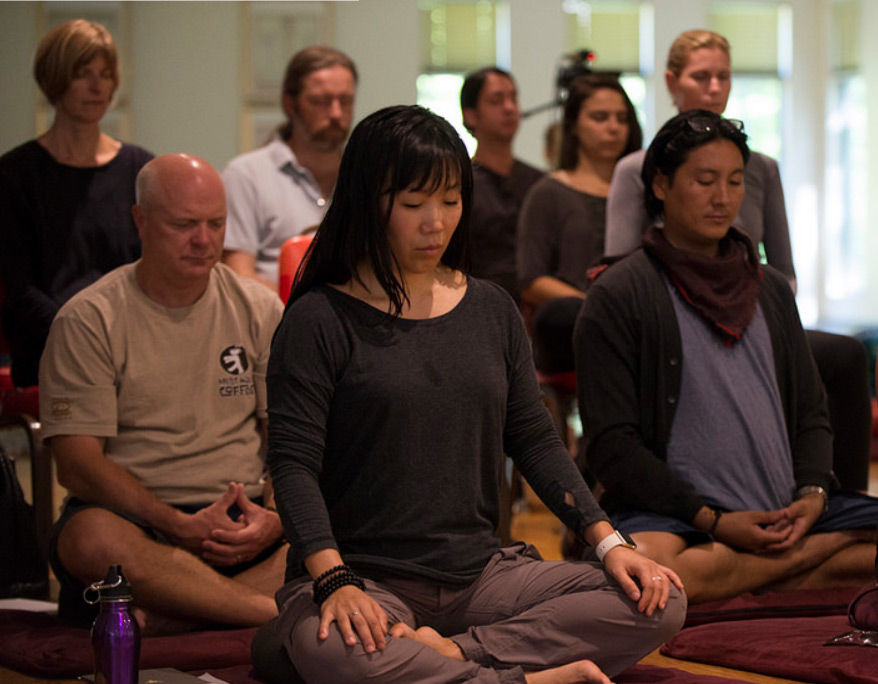
Students of the Contemplative Psychotherapy Program practicing meditation while on retreat at Menla Mountain House. Photo by Darren Ornitz.
For years, I sat in meditation classes and imagined that everyone else on the cushion was having some kind of better experience. I’d heard enough instructions from different teachers about the ubiquity of the “monkey mind” to accept that distraction was normal, but surely my amount of distraction was too much — much more than normal — and definitely more than anyone else’s.
by Geri Loizzo
There’s a reason why I’m so excited about our upcoming Meditation Teacher Training in Compassion. Though we benefit greatly from Mindfulness as the way of personal freedom, or the vehicle for not getting caught up in the stresses of everyday life, it is compassion practice that takes us back to Mindfulness’ ethical roots. Historical Buddha, after all, declared that every mind is noble regardless of race, class or gender. In that sense, his remarkable insights, the four noble truths, were radically compassionate at their very core.
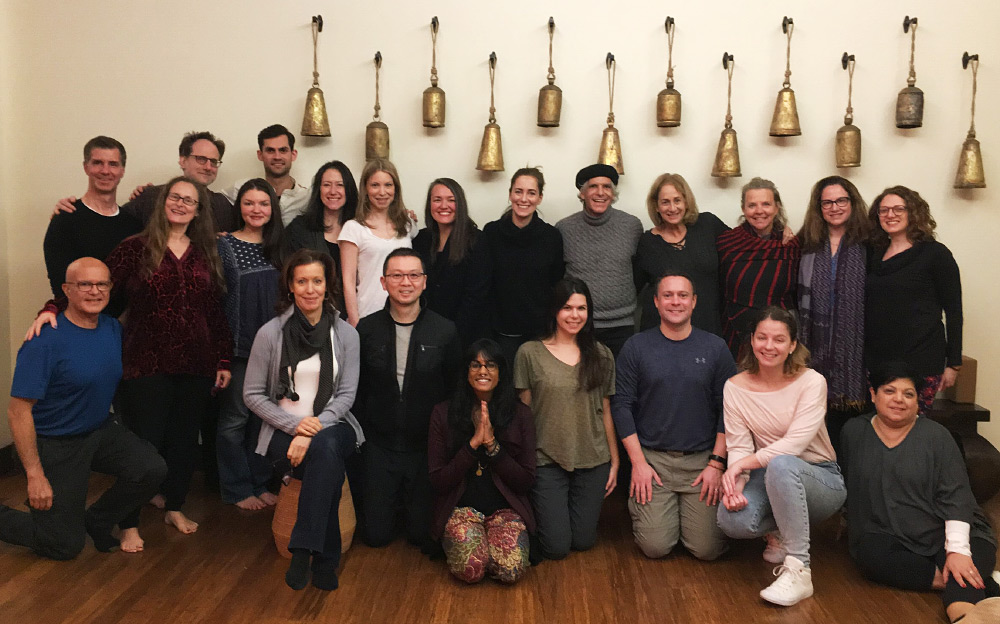
Students and teachers gather for graduation photo at the conclusion of our last training. Congratulations everyone!
Compassion Training is a treasure of practices that have the potential to soften the heart, protect from stress, and bring us closer to our fellow human beings in an ever-widening circle of kin. They are a social gift that keeps on giving.
by Joe Loizzo
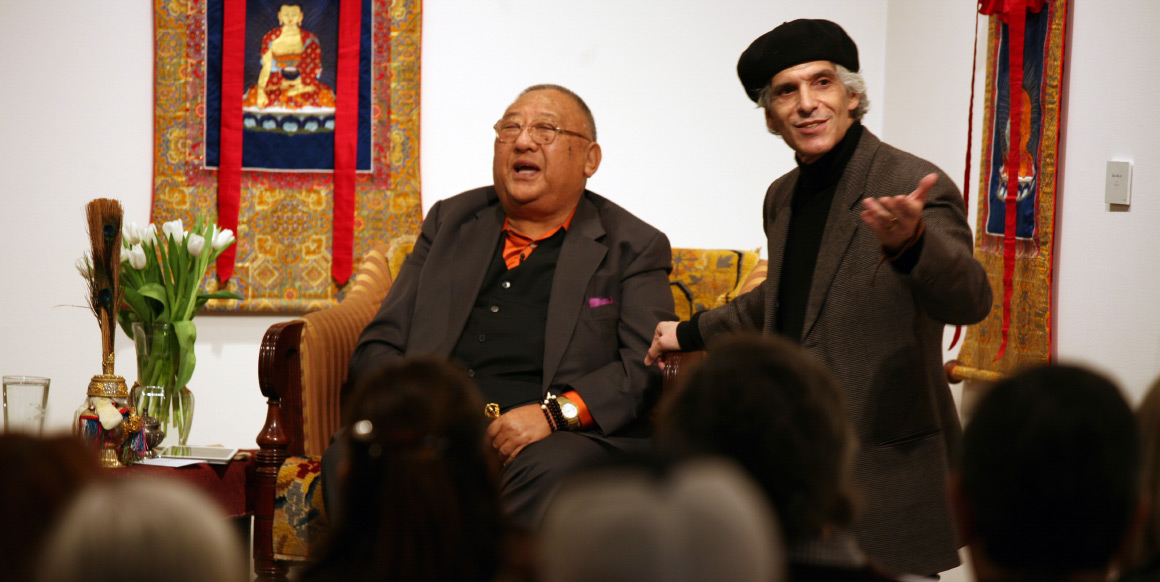
Early this year, the Tibetan community in exile and the international Buddhist community lost one of its leading lights—Kyabje Ngawang Gelek Demo Rimpoche—known to his many students around the world as Gelek Rimpoche, or simply Rimpoche, our precious gem. Besides His Holiness the Dalai Lama and Gelek’s peer, Trungpa Rimpoche, our jewel had few equals in his ability to be a living bridge between the spiritual-intellectual elite of Tibet’s Himalayan ivory towers and the increasingly global technology and pop culture of the modern West. While his preeminence among the vanishing breed of master scholars trained in the mountain kingdom alone would have merited a storied place in history, it was his unexpected role as a leading monk-exile turned lay Buddhist teacher that earned him global renown.

